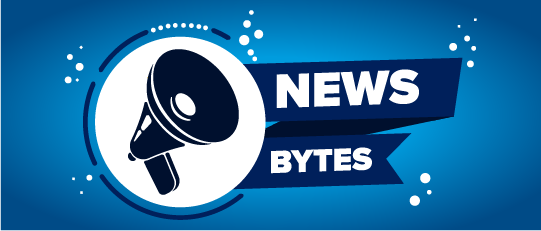For WorldatWork Members
- The Benefits Checkup: Is Your Offering Truly Maximized? Workspan Daily Plus+ article
- The Power of Play: Gamifying Employee Benefits Awareness, Workspan Daily Plus+ article
- Easy AI Tips to Improve Benefits Communications, Workspan Daily Plus+ article
- Wellness Woes: Why Aren’t Employees Using Your Benefits? Workspan Daily Plus+ article
- Getting Benefits Enrollment Right: Big Trends Spark Fresh Strategies, Workspan Magazine article
For Everyone
- How to Get Gen Z On Board with Employee Benefits, Workspan Daily article
- AI Could Be the Answer to Reduce Employees’ Benefits Confusion, Workspan Daily article
- Workforce Stress Is High; Wellness Benefit Usage Is Low, Workspan Daily article
- What TikTok Can Teach TR Pros About Financial Benefit Messaging, Workspan Daily article
Your employees may spend 18 minutes deciding what to watch on TV tonight. Meanwhile, two-thirds of working Americans spend just 30 minutes or less reviewing their annual benefits enrollment information — and nearly half do so in 20 minutes or less, according to research from Voya Financial.
In addition, they’re generally not happy with their selections.
So, where is the disconnect? Experts point to how employees, particularly members of the Generation Z and millennial demographics, are receiving — or not receiving — benefits information. Those same individuals spending less than a half-hour annually choosing their benefits are logging more than two hours each day on social media, signaling that they may want to consume their benefits information in the same way — emojis and all.
Access a bonus Workspan Daily Plus+ article on this subject:
Burnout is Boiling Over for Young Employees
The current context for bolstering young workers’ benefits engagement is precarious, reflecting economic and generational challenges.
“Millennials in particular have been through so many unprecedented events in the past decade,” said Sara Siegel, the assistant vice president of client executives at Benefitfocus, a Voya company. “I think everyone’s hungry for precedented times to be upon us and to have some stabilization. Work and personal life are never entirely separate from each other. General stress is higher for a number of reasons, especially within those younger generations.”
Additional research indicates the following about the younger workforce:
- Two-thirds of Gen Z workers struggled in the past year with social determinants of health, such as access to nutritious food and safe housing, and almost three-quarters of them believe their employers should help address those challenges.
- 51% of Gen Z, 54% of African Americans and 46% of Hispanics said they could not pay $1,000 out of pocket for an unexpected medical event.
- Similarly, nearly half of Gen Z and millennial workers said they do not feel financially secure, which is a higher rate than last year.
- Almost 9 out of 10 Gen Z and millennial employees shared that an unplanned medical cost would derail their financial plans, compared to 56% of Baby Boomers. The younger generations also were more likely to say they would take a hardship withdrawal from their retirement account to help pay for those expenses.
The result of all these factors? Burnout has reached a seven-year high, according to data from health insurance company Aflac. It’s especially hitting younger workers: Gen Z reported the highest levels of burnout across generations, at 74%.
Turning to Social Media for Benefits Information
The Aflac report showed that while almost three-quarters of employers feel their employees have a solid understanding of their total healthcare costs, only 54% of employees agree — and almost 70% of those workers wish their organizations would share more information about their benefits packages.
“Employees are craving more personalized, transparent information when it comes to understanding their benefits, making the right choices and being confident in those choices,” Siegel said. “When they don’t get it, anxiety rises. If you’re playing a new board game and you don’t know the rules, it will feel very stressful. This is similar, especially with younger generations.”
Half of the surveyed Gen Z workers in a MetLife Employee Benefit Trends Study said that most of the benefits communications their employer provides do not feel relevant to their lives, and 68% would prefer year-round benefits communication. Almost two-thirds of them would prefer more personalized recommendations — a desire also shared by more than half of employees of all ages.
“Younger generations don’t have as many places to turn,” said Stephanie Shields, the head of employee benefits at Equitable, a financial services company. “Many are still building financial literacy skills while juggling more financial burdens and facing limited access to personalized benefits guidance. These factors often drive them to seek information on how to make better decisions.”
Equitable research found that Gen Z workers are more likely than any other generation (37%) to use online and social media platforms such as TikTok and Reddit to learn about benefits, while millennials lead generations (30%) in using artificial intelligence (AI) tools for benefits guidance.
“The younger workforce is looking for information about their benefits in the same way they get information about the rest of their life,” Shields said. “But it’s important that they get the right and most accurate information.”
Reimagine Benefits Communications
There’s plenty to glean from social media platforms, but that information often lacks the specificity, safeguards or guidelines that employers can share about their own unique benefits. This is where HR and total rewards (TR) professionals can turn this hurdle into an opportunity.
“Historically speaking, so many organizations relied on their 18-page benefits guide,” Siegel said. “But the reality is, younger generations are far more apt to click on a ‘play’ button on a quick video or read a quick digital post, whether it’s an internal channel or incorporated throughout the benefits enrollment process. The best way to engage your workforce is to look for digital engagement channels. How else can you send out targeted, tailored, timely information to your employees?”
Reaching younger generations in the workforce with targeted benefits communications could have a significant impact. For example, Gen Z and millennial workers are twice as likely to blindly choose a health insurance plan, as well as to regret their enrollment choices, according to Justworks, an HR software company. These workers’ apprehension and lack of understanding of their benefits options is so acute that 29% of those surveyed generations would rather do their taxes than go through the open enrollment process; 22% would rather sit in the middle seat on a three-hour flight; and 12% would rather get a root canal.
“Providing the right level of education significantly increases interest in enrollment,” Shields said. “Hands down, we want employees to use their benefits, but they use them more when they understand them, and that creates a better health outcome and financial outcome for the employee.”
Editor’s Note: Additional Content
For more information and resources related to this article, see the pages below, which offer quick access to all WorldatWork content on these topics:
#1 Total Rewards & Comp Newsletter
Subscribe to Workspan Weekly and always get the latest news on compensation and Total Rewards delivered directly to you. Never miss another update on the newest regulations, court decisions, state laws and trends in the field.








